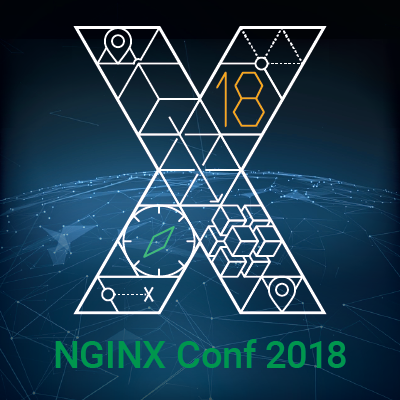Gretchen Rivas
Technical Trainer, NGINX
Gretchen is a technical instructor and instructional designer with 15+ years in technical training and technical sales. She holds MCSE certification, an MBA, and a Master’s in Data Science. She recently traveled all over the world training students on GE Digital’s Predix platform. A glutton for information, she likes to read, play the piano, travel, and watch action and scifi movies. She’s married with two amazing children, one cat, and two obnoxious dogs.
Presentation: NGINX Core
Location: Salon A/B/C Time: Monday, October 8, 9:00 am
NGINX Core is an eight-hour course that provides the foundation you need to administer, configure, and manage NGINX. Through lecture and hands-on activities you implement NGINX as a web server, load balancer, and reverse proxy. You'll secure your site with SSL/TLS and improve site performance with caching and compression. And you'll learn how to monitor and troubleshoot your site with live activity monitoring, custom logging, and dynamic server configuration. Whether you are new to NGINX, starting your first NGINX project, or refining your DevOps skills, NGINX Core gives you a grounding to build on. NGINX Core is also your gateway to more advanced training topics like Microservices Network Architectures with NGINX, and others.
If you're new to NGINX, NGINX Core is the place to start. If you’re self-taught, or have some working experience with NGINX, NGINX Core will help you solidify your understanding. In NGINX Core, you will implement the most common use cases for NGINX – web server, proxy server, and load balancer – in a secure, scalable way. As you do, you'll build a solid foundation for moving on to advanced topics, including more complex security considerations and microservices implementation and architecture.
NGINX Core combines lecture, instructor demos, and hands-on activities. Each lecture and instructor demo in NGINX Core is followed by hands-on activities in which you implement the use case in a preconfigured, personal training environment. For example, following the lesson on serving static content, you'll implement a basic web server that serves static content in your environment. In later modules you'll add a simple proxy server, enable security (HTTPS), implement variables and maps, route connections, rewrite and redirect requests, implement a variety of load balancing models, and configure caching.
Objectives
After completing this course you will know how to:
- Serve static content
- Proxy connections to upstream servers
- Configure and customize logging
- Configure HTTPS and site security
- Use variables in rewrites, routing, and maps
- Route connections
- Configure HTTP load balancing with the weighted Round Robin, Least Time, Least Connections, Hash, and IP Hash methods
- Enable live activity monitoring of servers and upstreams
- Implement and manage caching
- Implement compression
- Leverage the NGINX API to dynamically configure servers at runtime
- Install NGINX from binary and source
Audience
NGINX Core is intended for admins, architects, and DevOps professionals who are self-taught or new to NGINX.
Prerequisites
No prior knowledge of or experience with NGINX is required. Participants should have a basic understanding of web servers and the Unix command line. Required skills include running Unix commands, navigating the file system, and creating and editing text files.


